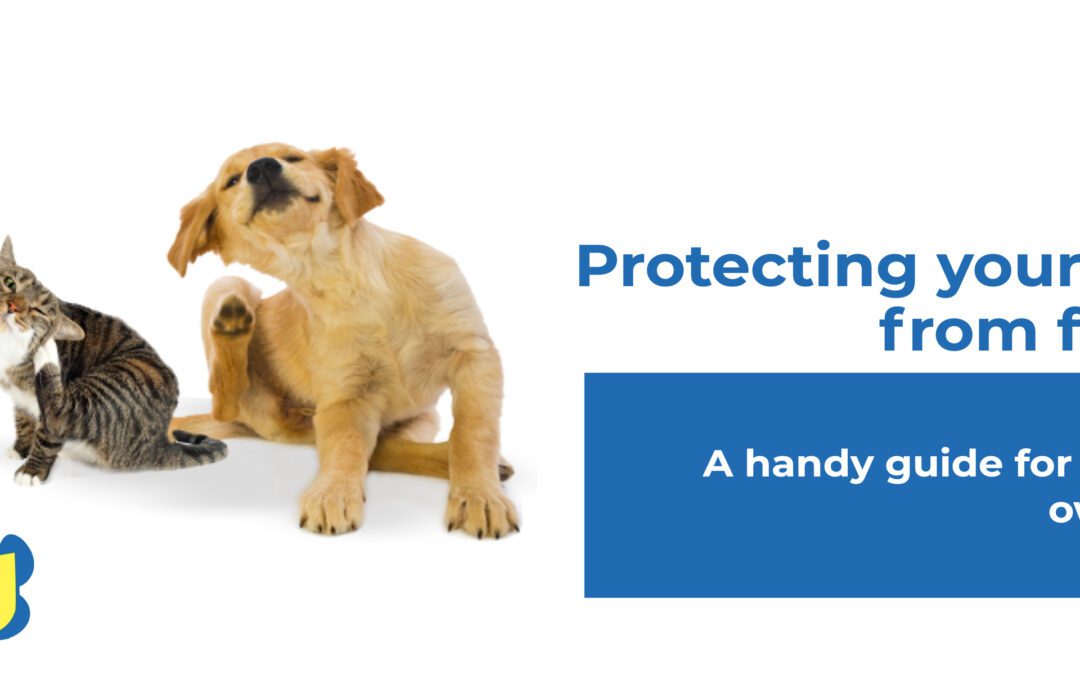Before you start to tackle the problem of fleas, you really need to understand the life cycle of the flea so that you can purchase the correct combination of products to meet your pet’s needs.

Your pet can catch a flea whenever they go outside, even if they never leave your own back garden! And, startling enough, you could even bring them in yourself!
The flea attaches itself to your pet and feeds for 2-3 days before laying eggs. An adult flea lays between 6-20 eggs per day. These eggs then fall off your pet and into their surrounding environment your carpets, pet bed and anywhere your pet goes!
Within a few days of eating and growing, these larvae develop into pupae. Pupae can lay dormant for several months and are usually stirred by warm weather or movement by a potential host.
And then the cycle starts again however, not with just one flea but 20 then become 400 then 8000 and in a few weeks, and infestation has taken hold!
Treating the infestation
Treating your pet
This can be quite confusing as the market has been flooded with products so here is a quick guide on what to buy:
- Flea drops: These come in small pipettes and the drops are placed between the shoulder blades of your pet. Make sure to weigh your pet beforehand and choose the correct size pipette. NEVER use a product intended for a dog on a cat as some can be LETHAL . They are active for up to 5 weeks in cats and up to 4 weeks on dogs.
- Flea tablets: These are given by mouth and are available for both dogs and cats. They start working within just 15 minutes but, they do stop working after 24 hours. Repeat on any subsequent day as necessary.
- Flea collars: Kills adult fleas and can prevent their return for up to 4 months
- Flea shampoo, spray or powder: These tend to kill fleas on contact only and therefore, require you to repeat applications. Shampoo will give you a better all round coverage but, a powder may be better for cats as they can become distressed by sprays or shampoos.
Treating your home
Keeping onto of cleaning your home is an important step in overcoming a flea infestation.
- Vacuum the whole house and empty the vacuum. Change your pets bedding if possible or wash at as high a temperature as possible.
- Use a household spray or powder (use this over your whole house). Products that contain an insect growth regulator (IGR) are effective in breaking the flea life cycle.
- Allow pets continued access to infested areas.
- ALWAYS keep any unused products in their original packaging to avoid confusion.
- NEVER use an environmental treatment on a pet.
- Try NOT to let your pet groom itself or each other immediately after applying flea treatment.
- Do NOT use products containing ivermectin on Collies or old English Sheep Dogs.
- Caution also needs to be adhered to in multi-pet households that have both cats and dogs where flea drops are being used
Why are fleas a problem?
Fleas are far more than just a small irritation, they can cause serious health problems for your pets!
- Itching and scratching can result in a loss of fur
- Flea allergy dermatitis is and unpleasant skin condition caused by the flea’s saliva
- Anaemia can be caused by fleas drinking blood in puppies and kittens
- Tapeworms can be passed to your pet as a result of being bitten
The adult fleas on your pet only accounts for just 5% of the whole infestation. The other 95% consist of the eggs, larvae and pupae in the environment!

Flea & Tick products
We offer a wide selection of different products to help either prevent or treat a flea infestation.
Should you need any advice on which products you need or need further information, click here to send us an email or call us on 01482 585315.

